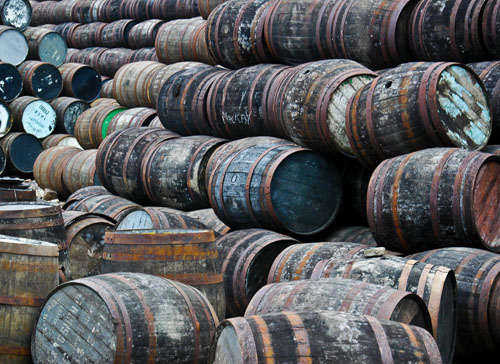
| History Served Straight |

The world of advertising has made an interesting shift from how products accentuate their
attributes (taste and flavor) to what products can do to improve your life. Advertising
for products that have been around for a period of time has not only created campaigns,
but also a culture associated with their product. The culture that is surrounded by
advertisements has been made to interpellate the viewer into becoming the ideal person
that the producers want you to be. When a person becomes the "ideal" consumer it looks
something like a fan. Davisson and Booth define some of the common images of a fan are,
"These common images of fans, people who have developed a relationship with an artifact of
popular culture, illustrate what can be termed a fanatic, or one who expresses a fanatical
devotion to that relationship or to an artifact (33)." The culture that has been and is
created by the media is modeled after hegemonic culture. Margaret Duffy describes in
Gender and Utopia in Advertising how "[...] advertising is a bellwether of cultural
trends, a mirror of social values, and a powerful, usually malevolent forces that shapes
those values" (Manca, 5). Today images that mirror our culture have us mimicking those
images back creating an endless cycle. We determine what goes in to the media just like
they tell us what makes society's hegemonic culture. Whiskey has stuck to similar core
values throughout its existence. It is smooth, not for the faint of heart, and in my
experience through the consumption of this beverage it can singlehandedly improve your
image.
Davisson, Amber, and Paul Booth. "Reconceptualizing Communication And Agency In Fan Activity: A Proposal For A Project Interactivity Model For Fan Studies." Texas Speech Communication Journal 32.1 (2007): 33-43. Communication & Mass Media Complete. Web. 7 May 2013
How Beer Saved the World. By Martyn Ives. Perf. Henry Strozier. 2011. Discovery Channel.
Manca, Luigi and Alessandra. "Gender and Utopia in Advertising". Lisle: Procopian Press, 1994.
Schultz, E. J. "Bourbon Boom Overseas Fuels Record Spirits Sales." Advertising Age 83.6 (2012): 2-20. Communication & Mass Media Complete. Web. 7 May 2013
Wilcox, Gary B., Kim Kyunkok Kacy, and Heather M. Schulz. "Liquor Advertising And Consumption In The United States: 1971-2008." International Journal of Advertising 31.4 (2012): 819-834. Communication & Mass Media Complete. Web. 7 May 2013